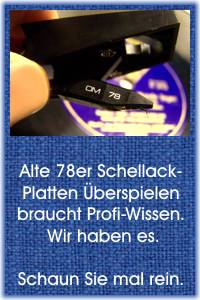FM Recording
The first of these problems was low frequency response. If the output of an audio head was at a given level at 20 kHz, the same signal would be some 60 dB lower at 20 Hz, due to the aforementioned 6 dB/octave increase in playback level with frequency. For audio, 60 dB can barely be compensated for with simple electronics. For video, a signal recorded at 30 Hz would be 102 dB lower than one recorded at 4.2 MHz. This is more than a 10 billion:1 change in level over the 17 octaves of the video signal! No equalizer known then or now could easily correct this sort of a gain imbalance. The practical symptom caused by this imbalance was noise in the picture.
So, the engineers knocked their heads together again, and came up with FM recording. The process was simple: Convert the video to FM with a carrier frequency situated near the top limit of the frequency response. The primary advantage was to shrink the bandwidth required to reproduce the full range of video frequencies down to about 10 octaves (with FM sidebands). Another important advantage of FM is the reduction of high frequency noise in the picture. AM modulation would have left more noise in the picture at high frequencies, where it is more objectionable to the eye. FM recording does not require bias, as the signal is constant-amplitude, and recorded at the saturation level of the tape. It acts as it's own bias. Amplitude variations resulting from tape imperfections could be removed with a simple limiter. But even FM wasn't without problems, as we shall see.
The FM frequencies originally chosen for quadruplex were 4.28 MHz for sync tip, 5 MHz for blanking, and 6.8 MHz for peak white. This combination gave excellent black and white pictures. But when color started to be popular, this combination caused a strong beat between the color subcarrier and the FM carrier. So, a second scheme of frequencies had to be adopted. These were 5.5 MHz tip of sync, 5.79 MHz blanking, and 6.5 MHz peak white. This eliminated the beat problem, but degraded the signal-to-noise ratio. Finally, a third standard was created when better electronics, heads and tape were available to take full advantage of the quadruplex format. This format features a sync tip frequency of 7.06 MHz, blanking at 7.9 MHz, and peak white at 10 MHz.
This format came to be known as High-Band. It gave excellent color along with low beat interference and good signal-to-noise ratio. (The older standards came to be known as low-band mono and low-band color, respectively.) High band was so good that it was adopted for 1" type C. Yet, at the end of the quadruplex era, a standard known as super high band was briefly introduced. It used frequencies as high as 11.7 MHz, but had a low deviation, like low band color. although it offered superior color, it never caught on due to it's noticeably poorer signal-to-noise ratio.
Virtually all VTR formats have been 'high-banded' at some point in their careers. Notable exceptions to this are 1" type C and VHS. (VHS HQ is actually a series of specification-tightenings.)

